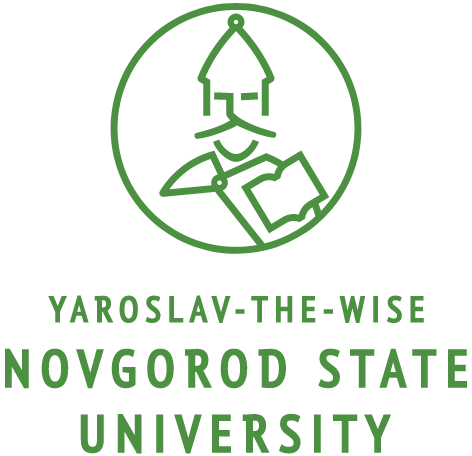Letter from the Editor-in-Chief
Abstract
Dear colleagues, our authors and readers!
The current issue of the journal, like the first one for last year, dedicated to the problems of neology, is the product of joint efforts of university linguists and employees of the group of Dictionaries of New Words of the Department of Lexicography of the Modern Russian Language of the Institute for Linguistic Studies of the Russian Academy of Sciences (St. Petersburg).
As last year, the issue can be considered a kind of continuation of the traditional December conference of the Institute for Linguistic Studies of the Russian Academy of Sciences “NEOLEX”, and it is best to start reading it from the SCIENTIFIC LIFE: CHRONICLE, REVIEWS part, more precisely with information about this conference, which has been kindly prepared for our journal by the Head of the Department, Marina Nikolaevna Priemysheva and her colleagues Elizaveta Sergeeva Gromenko and Alina Sergeevna Pavlova. This text provides a picture of what happened at the conference and immerses in its atmosphere of careful discussion of both the problems of neology and neography, and individual words, around the interpretation of which controversy flared up, or, in any case, different interpretations were proposed. For conference participants, this text is like a photograph for memory, for those who were not there, an opportunity to feel the nerve of neological work, its difficult moments and, as they say now, trends.
The NEW WORD IN PRESENT, PAST AND FUTURE part includes articles by St. Petersburg neologists. The definition of conference continuation is most applicable to the first of them: Natalya Vitalievna Kozlovskaya and her graduate student Alina Sergeevna Pavlova in the article One-month words mirrored by operational neography offer interpretations of words that came into the spotlight after the conference took place — in December of last year and January of this year. That is, we are given the opportunity to get acquainted with the latest characteristics of the newest words, which refutes stereotypes about the lag of lexicography by about half a century. This is the most relevant present time.
Irina Borisovna Diaghileva’s article English loan verbs in 19th century Russian language turns us to the past, or rather the century before last. Introducing the reader to the stories of verbs that are well known to us, like startovat' (to start) or flirtovat' (to flirt), or not known at all, like makadamizirovat' (to macadamize), the author demonstrates the difficult paths of word migration and related concepts, culture-bound terms and languages.
The article Neographic digital resource neolex.iling.spb.ru: search opportunities and development prospects by Yulia Sergeevna Ridetskaya draws us to a future in which computer technologies will occupy an increasing place in the work of a linguist, in particular, a neologist. However, this is a future that has already arrived: the analyzed resource not only actually works, but it is also open, and, in principle, any Internet user can obtain information about updating Russian vocabulary in real time. A quarter of a century ago, if such a possibility had been discussed by linguists, it would have only been as science fiction. However, it should be noted that the digital resource under discussion does not itself conduct observations on new vocabulary; behind it is the daily work of linguists observing millions of texts, which cannot but arouse our admiration.
So, the first part presents three different points of neological problems and makes it possible to see it voluminously and broadly chronologically — from the fairly distant past to the digital future.
Our traditional part YOUNG VOICES presents an article by Yaroslav-the-wise Novgorod State University graduate student Natalya Aleksandrovna Klimkova, who has examined one case from the practice of translating media texts — New word as by-product of media text translation. The article is interesting in that it shows how the appearance of a new word turns out to be a forced action of the translator, who cannot wait for the desired nomination to enter the language. The seemingly successful discovery of the author of the article required a discussion of a number of linguistic problems that arise in such a situation.
The issue is concluded with To express the inexpressible: nonce word as lexicographic description object review by Novgorod State University associate professor Anna Valerievna Batulina. It analyzes three dictionaries that present occasionalisms with which neology deals very often and the interpretation of which, as the author of the review shows, is not such a simple thing. Of course, the three dictionaries do not exhaust the lexicography of occasional vocabulary, but they present its problems very expressively.
So, the issue, offered to your attention, prepared by university and academic linguists, captures a number of neological storylines that characterize both the process of updating Russian vocabulary and the problems of its recording, comprehension, interpretation, which allows us to hope for the attention of readers.
I sincerely thank all the authors of the issue, hoping to continue our cooperation. Many thanks to the reviewers — Doctor of Philology Tatyana Gennadievna Nikitina from Pskov University and Novgorod colleagues — Doctors of Philology Vladimir Ivanovich Zaika and Victoria Genrikhovna Didkovskaya.
Until we meet again on the electronic pages of our journal!
T. V. Shmeleva
Downloads
Downloads
Published
How to Cite
Issue
Section
License
Copyright (c) 2024 Verba

This work is licensed under a Creative Commons Attribution-NonCommercial 4.0 International License.








